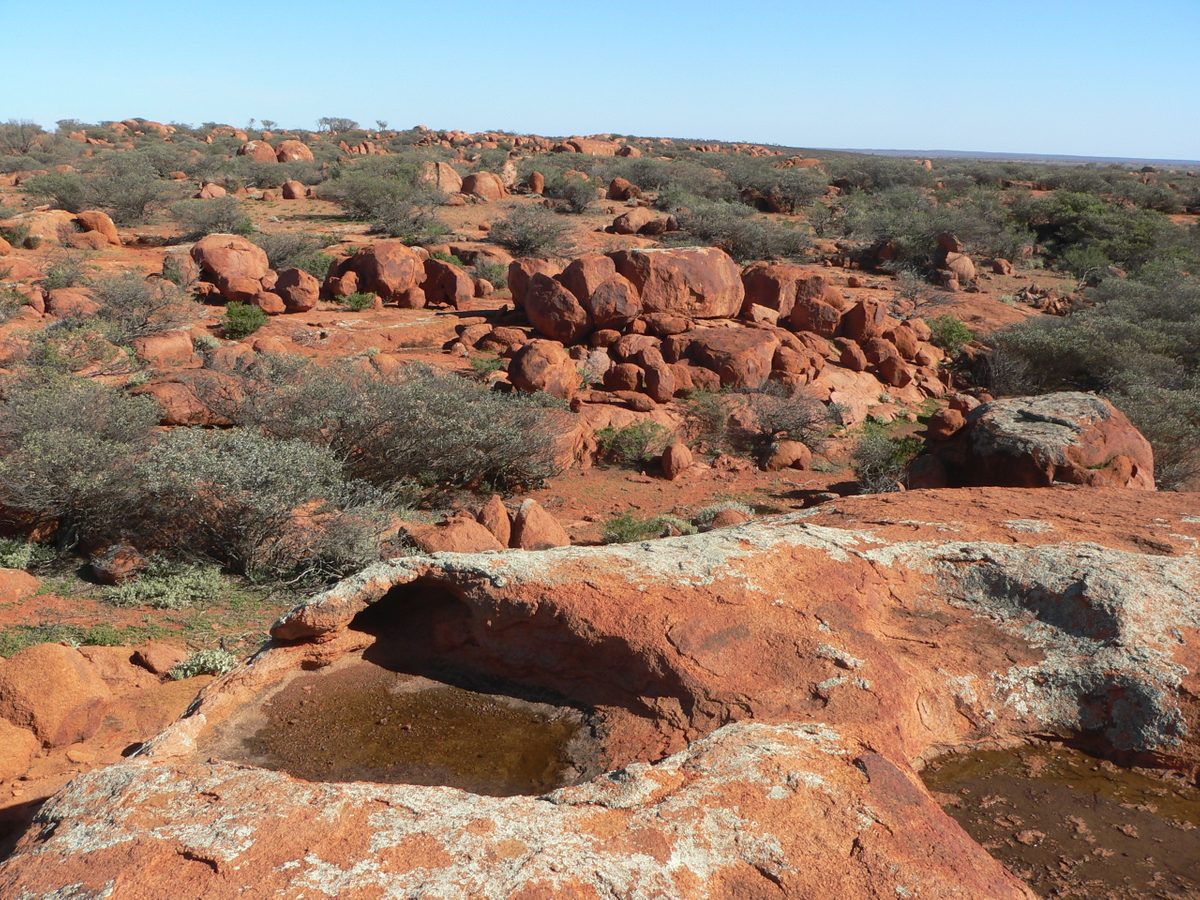
Find out about the cultural importance of rock-holes in South Australia’s Gawler Ranges
Do you know your rock-holes from your rock-pools?
This National Water Week learn more about the importance of rock-holes to First Nations peoples, and what’s being done to ensure these special places remain for future generations.
Most people are familiar with the rock-pools we see at the beach, revealed when the tide is low. They’re often filled with an interesting array of aquatic life like small crabs, juvenile fish and sea anemones.
But did you know as much about rock-holes? A rock-hole is a natural watering hole formed by the weathering of hard rock, particularly granite outcrops, which fill with water during local rainfall events.
In South Australia’s Gawler Ranges on the Eyre Peninsula there are no rivers, creeks or significant streams, so rock-holes are an essential resource for the region.
For Traditional Owners, the Kokatha, Barngarla and Wirangu peoples, the rock-holes on the granite outcrops of the Gawler Ranges region hold significant cultural value, as important gathering places and providing resources that have helped them to survive on the land for thousands of years.
These places have a long history of human use by Traditional Owners and more recently by European explorers as important stopover points, by Afghan camel drivers as key trading routes, and landholders as watering points and stock routes.
Little was known, however about the current ecological health of the rock-holes.

In 2012, in a project between the First Nations groups, South Australian Native Title Services, South Australian Arid Lands (SAAL) Natural Resource Management (now Landscape SAAL), the Department for Environment and Water (DEW) and landholders, science has contributed to traditional knowledge to better understand and record the cultural and environmental values of these sites and develop management recommendations to look after them.
Historically, information about the plants and animals associated with these culturally significant rock-holes hasn’t been well recorded. DEW Aquatic Ecologists Glen Scholz and Mel White worked with the Gawler Ranges native title group to assess the site condition and record the species found in and surrounding the rock-holes of the ranges
Species observed included the mulga (Acacia aneura), an important tree used for Aboriginal artefacts, tools and food, shrub species; the Emu Bush (Eremophila), used in bush medicine; and grasses such as the Woollybutt grass (Eragrostis eriopoda), another important food species.
They looked at the plants and organisms growing and living within rock-holes, and observed the rare, granite mudwort (Limosella granitica) – found in the granite rock-holes in the Gawler Ranges, and listed nationally as vulnerable.
They also found a range of aquatic insects, including the ferry shrimp and clam shrimp, which can survive in the rock-holes even during times when water is scarce – forming a thick, shell egg around itself and living inside it until rain comes to fill the rock-hole once again.
The main objectives of the 5-year project were to enhance the knowledge and understanding of the cultural, ecological and pastoral value of rock-holes, to raise awareness to allow for their protection and management, to increase stakeholder engagement in rock hole management and produce a community-owned cultural and ecological database to store knowledge for future generations.
Gawler Ranges Rock-Hole Project presented by South Australian Native Title Services
The Gawler Ranges have been recognised as one of the oldest geological formations in the world. If you would like to learn more about the Gawler Ranges and some of the spectacular scenery and wildlife you will see there, check out, Ranger tips: Gawler Ranges National Park and Top five things to see in Gawler Ranges.
Lead image: a large rock-pool found in South Australia's Gawler Ranges. Image by Glen Scholz.